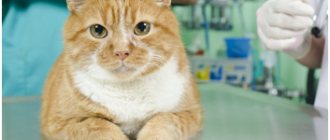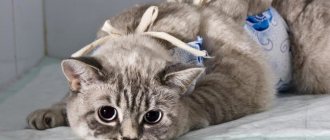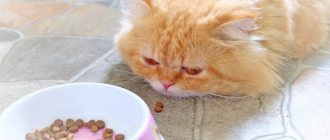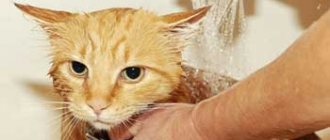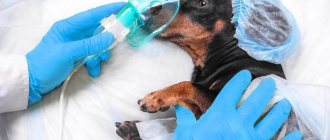According to some veterinarians, spaying cats during heat is not a good idea. There are factors under which the procedure cannot be performed. However, in some situations, castrating a cat that has gone on a spree is still allowed. In order not to provoke serious consequences for the cat’s body, spaying and castration should be carried out after consultation with a veterinarian.
Can surgery be performed during estrus?
The opinions of veterinarians on this matter vary. Some are convinced that it does not matter to an experienced veterinarian at what period a cat is sterilized. Others assure that it is better to do the procedure before the first heat, so as not to provoke the development of serious complications. In addition, if the manipulation is carried out after mating, the pet may still have a sexual desire. Before you decide to castrate a cat that has been on a spree, you need to pay attention to its general health, as well as its age. If the animal has reduced immunity and problems with the cardiovascular system, veterinarians recommend waiting until the end of the festivities.
It will be better if the operation is performed 7 days after the binge.
Optimal age for intervention
Animal lovers often wonder whether it is possible to sterilize a cat while walking. It's best to do this as early as possible. For example, recommended age:
- 8 months;
- 10 months;
- 1 year;
- 1.5 years.
Babies easily tolerate sterilization, complications are rare
By completing the procedure at eight months, the owner is guaranteed to solve the problem of unwanted pregnancy once and for all. However, animal owners are often afraid that too early intervention can harm the fragile body. These fears are unfounded. If the cat is healthy, no problems should arise. The main thing is to follow all the recommendations of the attending veterinarian.
Important! Difficult childbirth is much more dangerous for a young female.
The younger the animal, the easier it will tolerate the effects of anesthesia.
Why not: advantages and disadvantages
After the procedure, the animal’s chances of living to an old age are significantly increased.
If you castrate a cat that has been on a spree, you will be able to get rid of many of the problems that occur during the rut. After surgery, the pet becomes calmer and gets along well with other pets. The animal stops tearing up furniture and screaming heart-rendingly, and the likelihood of developing cancer of the genital organs decreases. In addition, manipulation makes it possible to increase life expectancy.
Surgery during estrus has not only advantages, but also disadvantages. First of all, it needs to be said about the possibility of anaphylactic shock caused by intolerance to medications used for anesthesia. In this situation, the pet may subsequently develop kidney or liver failure. In addition, during estrus the uterus is enlarged in size and its blood supply is increased. As a result, increased blood loss may occur during surgery.
A cat that walks has an unstable hormonal background, as a result of which the duration of the rehabilitation period may increase after sterilization. Since hormonal levels are elevated during estrus, surgery at this time increases the likelihood of a longer normalization of the hormonal system. It is possible that the pet will imitate the state of heat for a certain period of time.
Signs of estrus
To attract males, females use 2 tools: voice and smells. All sounds made become rougher and louder. Frequent but light urination occurs not only in the litter box - the pet leaves odorous marks on vertical and horizontal surfaces. Raising her tail and turning her back towards the target, she secretes a few drops of urine.
Another way to place marks is by rubbing them on objects. The glands on the cheeks of furry pets secrete a special secretion, allowing them to leave an individual scent.
The signs of the first menstruation are identical to subsequent ones. They are distinguished only by their weak expression in young animals.
Remember that discharge during “critical days” should be transparent. The appearance of blood or pink clots is a dangerous symptom that requires diagnosis.
When is it not carried out?
If an animal has ailments of the cardiovascular system, it is worth waiting out this period for surgery.
Sterilization during and immediately after estrus is prohibited when the cat has the following conditions:
- age more than 10 years;
- disorders of the cardiovascular system;
- the presence of inflammatory processes in the body.
Possible risks
If the veterinarian answers positively to the question whether it is possible to sterilize a cat during heat, he is obliged to explain to the owner all the possible risks:
- Significant enlargement of the uterus makes it difficult to remove it correctly from the animal’s body.
- Sterilization and estrus can greatly impact the immune system if the animal is initially weakened or has chronic diseases.
If the procedure is carried out during estrus, it can provoke an exacerbation of gynecological diseases in the cat.
Surgery during estrus is not advisable
How to prepare an animal?
When the owner nevertheless decides to sterilize his pet even during the period of heat, it is important to approach the preparation responsibly. First of all, kittens must be vaccinated and dewormed. The operation can be carried out 14 days after these manipulations. If the cat is over 5 years old, a visit to the veterinary clinic will be required, where the doctor will conduct examinations to show that the procedure is admissible. If the animal is in good health, the doctor allows the operation. The cat must not be given food 12 hours before. The pet cannot be given water 2 hours before the procedure.
Carrying out sterilization
Initially, the animal must be immersed in a state of anesthesia so that the doctor can carry out further measures.
First of all, the cat is given anesthesia, after which the veterinarian proceeds directly to the surgical intervention, following the following algorithm of actions:
- Treats the surgical area with antiseptic solutions.
- Makes an incision, opening access to the abdominal cavity.
- Removes the ovaries.
- Places stitches.
Postoperative consequences
The main complication for cats that walk is pain. Because the appendages and uterus enlarge after the first heat, the veterinarian makes a larger incision than usual, so post-operative pain increases. It is possible that lumps may appear near the wound, which develop due to the accumulation of exudate. Sometimes seromas are noticeable, which are bulges observed due to rupture of the subcutaneous tissue.
Sometimes in animals after the procedure the formed suture becomes inflamed.
Some pets have been found to have abscesses, which are caused by infection during surgery. The animal may also experience suture rupture and infection. In such a situation, inflammatory processes and the release of purulent exudate are observed. When the veterinarian improperly ligates large vessels, serious bleeding can occur, which can sometimes even lead to death if help is not provided to the cat in a timely manner.
Septic peritonitis can also occur, but it is diagnosed quite rarely. It develops due to the entry of pathogenic microorganisms into the operated area. In addition, the cause of this disease can be a severe decrease in immunity. Damage to the urethra is often observed due to improper surgical intervention. Since the ureters are located near the genitals, the risk of injury is quite high. Lethal outcome, which can occur due to incorrectly chosen anesthesia, should not be excluded.
Minuses
To castrate a cat or not? The veterinarian's advice in this case is obvious. Yes, it is advisable to do this procedure. But you need to know about its disadvantages. There are only two of them, but in every barrel of honey there is a fly in the ointment.
Castration is an operation. It's worth remembering this. To avoid serious consequences, such as suture dehiscence and suppuration, you should follow all the doctor’s recommendations for caring for your cat after surgery.
Nowadays it has become popular to carry out this procedure at home. Better not, take your pet to the clinic. The fact is that sterilization and castration imply maintaining ideal cleanliness in the room. This can hardly be achieved at home.
Cat care
After surgery, the animal remains under anesthesia for several hours. Upon arrival home, the owner needs to place the cat on a bed and cover it with a blanket, since anesthesia helps lower body temperature. It is recommended to lay the pet on its side and place a heating pad nearby. You should turn the cat over every 30 minutes and gently close her eyes so that they do not dry out. It is important for the owner to ensure that, after regaining consciousness, the pet does not climb onto high surfaces, since after anesthesia, coordination of movements is impaired and the cat may fall and be injured.
About 24 hours after the operation the animal refuses to eat. Veterinarians from the Zoovet clinic categorically do not recommend forcing a cat to eat food. However, it is important to provide her with access to drinking water. At the same time, you need to ensure that your pet does not lose consciousness or choke. You need to feed your pet every other day. It is recommended to feed wet food in small portions. It is better to pay attention to premium segment complementary foods, which are intended for animals that have undergone surgery. Such products contain the composition required for a weakened body and improve the functioning of the gastrointestinal tract. Cats often tend to lick the seams, so you need to purchase a special collar that can only be removed during feeding. The owner needs to treat the cat with maximum care and love, since the pet has experienced serious stress.
Features of the rehabilitation period
With proper care after sterilization, the cat will recover in about a few days. Anesthesia does not negatively affect the animal's body when a normal amount of anesthesia is administered.
Proper rehabilitation proceeds as follows:
- The animal must walk in a special bandage for about one week. If your pet is very active, it is recommended to wear a collar; it will help prevent licking and tearing of the seams.
- For about a week, the pet should be given food in liquid or canned form so that there is no heavy burden on digestion.
- You need to limit your pet's physical activity for two weeks. We must stop playing with the animal and not allow children to spend time with it. If there are heavy loads, the seams tend to separate.
- The wound will need to be looked after, wiped daily with miramistine or chlorhexidine.
After sterilization, the animal will show less aggression and stop marking. After surgery, your pet's appetite will increase, so it is best to switch your pet to special food to avoid obesity.
